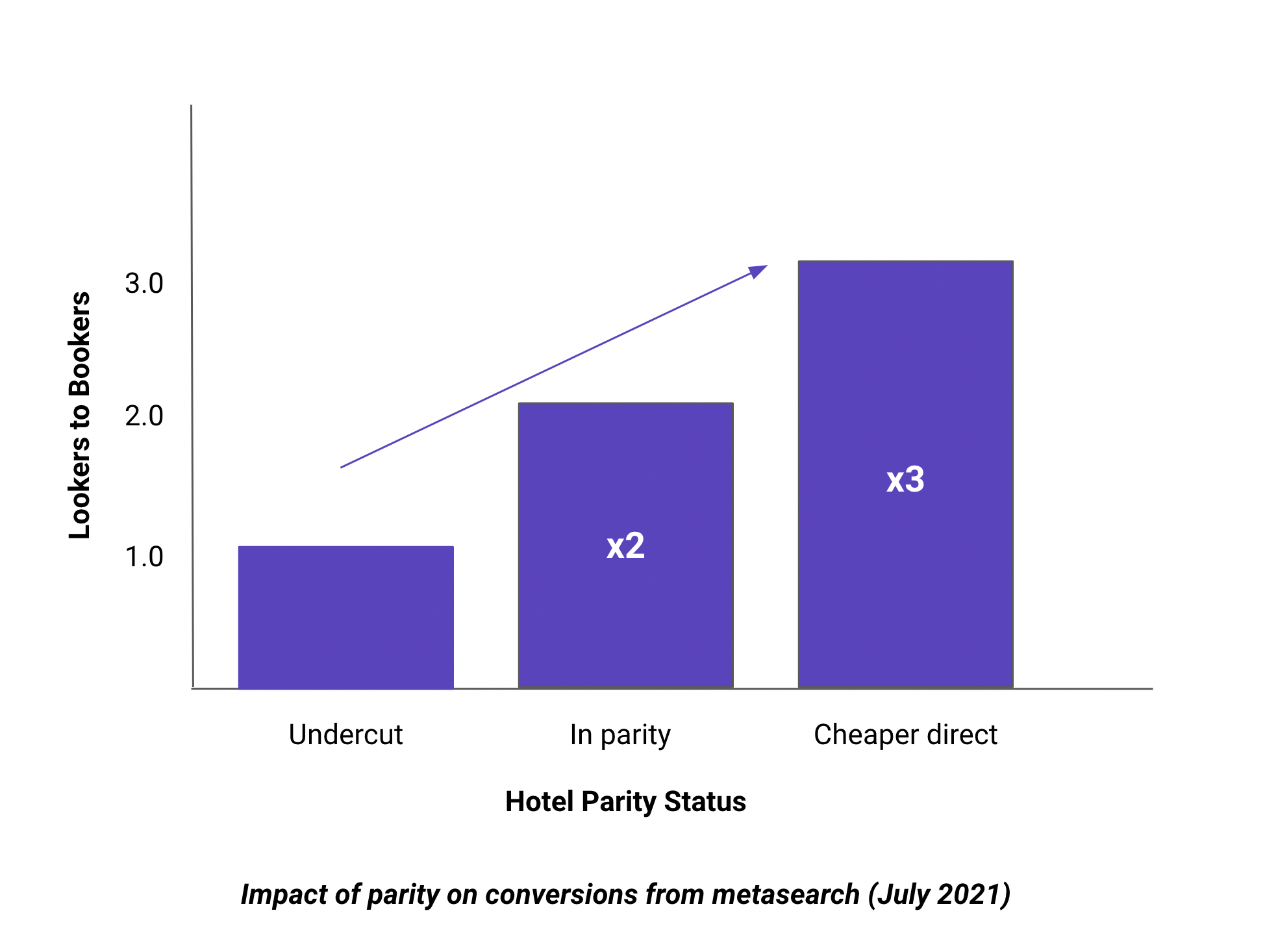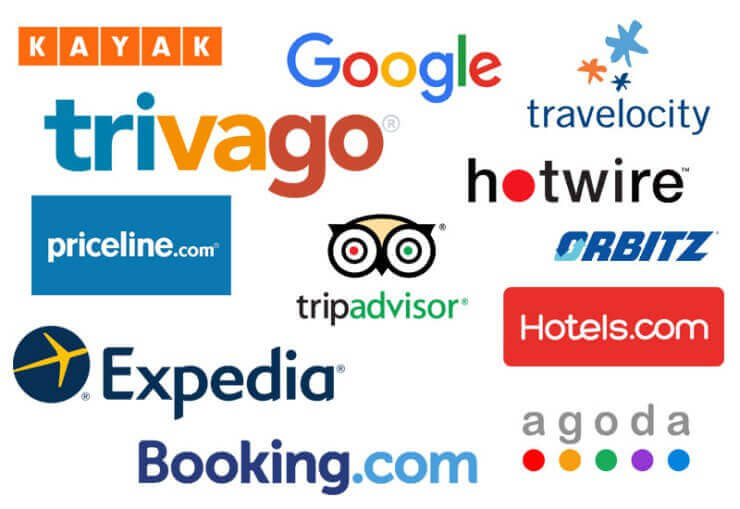Having the right price on metasearch is critical. If you’re a regular reader of our blog, you already know that. But do you know just how big of an impact maintaining good price parity could have for your hotel?
NB: This is an article from Triptease
The latest analysis from our global hotel database has shown that – from the tens of thousands of searches run in the past 30 days on metasearch – having the best available rate on your direct channel could triple your booking engine conversion rate. In other words, it can triple your chance of converting lookers into bookers.
Subscribe to our weekly newsletter and stay up to date
Even if you are unable to offer the cheapest rate online, the data shows that when a hotel’s prices are in parity on metasearch (rather than being undercut) conversion rate doubles. That means that if your price is worse than every other advertiser in the auction, you’re automatically halving your potential bookers from metasearch.

Note that this is booking engine conversion rate (meta bookings/ meta impressions) – so it represents people who went on to book after having specifically searched for your hotel on metasearch. It is the combined effect of both getting that click on metasearch, compounded by the higher propensity of that guest to convert, exactly because they saw a better price. This is not to be confused with website conversion rate, which denotes the rate at which any visitor to your website goes on to book.
The message here is clear: participating in metasearch won’t drive you much volume if you’re not also carefully monitoring your rate parity. A high-performing, data-led metasearch strategy requires active parity management and a real commitment to maintaining the best price for your customers.
Do you know how many direct bookings you’re currently missing out on by letting OTAs beat your price on metasearch? With the rapid growth of metasearch driven by Google Travel in recent years, this is now the key price parity battleground where hotels need to win. You only have a few seconds to grab your potential guest’s attention – and there’s nowhere to hide if you don’t have the best price. Here is a breakdown of how to win that booking.
1. Use up-to-date parity data to bid algorithmically
It’s almost impossible to manually check your rate parity for every single search a potential customer makes – but it’s definitely impossible to update every single bid on every single metasearch channel based on your parity status. By automating this process, OTAs have pulled out in front of hotels, becoming better, faster and smarter at putting the right price in front of the right guest. But what if you could fight back with the same tools?
At Triptease, we’ve taken the manual effort out of metasearch. Our market-leading algorithms are constantly checking your parity status and using that data to inform the bidding strategy for your hotel. Moving from manual to intelligent, data-driven, automatically-calculated bids for metasearch saves you money in two ways:
- You participate in the auction only if you are in parity or cheapest direct.
- You have the option to bid more for high-intent/more relevant guests.
2. Continuously monitor and improve your parity
Metasearch makes it easy to view and compare the most important booking consideration for most customers: price. Guests want to see a price comparison on their booking journey. In fact, the data shows that hotels convert better when there is at least one competing advertiser in the auction (compared to having the only rate available).
But in order to give customers confidence that your price is best you need to regularly monitor your hotel’s price parity and actively address price disparities that will hurt both your click-through-rate (CTR) and booking engine conversion rates. In short, price disparities decrease your ability to successfully convert those lookers into bookers.





